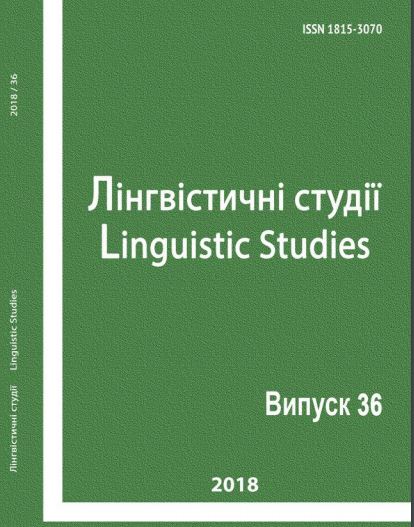Structural-Semantic Features of the Terminology Used in the Musical Score.
DOI:
https://doi.org/10.31558/1815-3070.2018.36.18Keywords:
lexico-semantic field, lexico-semantic group, lexeme, term, musical terminology, tempo, character of performance, dynamic shadesAbstract
Musical terms are an integral part of the musical text, which plays an important role in the communication between the composer, performer and listener.
In the specified semantic group there are 3 lexico-semantic subgroups, namely, lexemes for designation of musical tempo, character of performance and dynamic shades. Lexemes of each group can be supplemented with modifiers, expressed by adverbs, which serve to clarify the degree of manifestation of tempo, articulatory and dynamic characteristics of music.
At the current stage the majority of musical terms of musical score are unambiguous and invariant, which is typical for any terminology.
References
Buluchevskyj, Jurij, and Vitalij Fomyn. Kratkyj muzykal'nyj slovar' dlja uchashhyhsja. (A short musical dictionary for students). M.: Muzyka, 1998. Print.
Alekseev, Aleksandr. Yz ystoryy fortepyannoj pedagogyky. (From the history of piano pedagogy). K: Muzychna Ukrai'na, 1974. Print.
Baranova, Svetlana. Muzykal'nyj tekst: jazyk, znak, signal, simvol (Musical text: language, sign, signal, symbol). Jelektronnyj nauchnyj zhurnal «Vestnik Omskogo gosudarstvennogo pedagogicheskogo universiteta»(Herald of Omsk State Pedagogical University) (2007). Web. 22 Nov. 2018.
Bulyk-Verhola, Sofija “Antonimichni vidnoshennja v ukrai'ns'kij muzychnij terminologii' (Antonymic attitudes in Ukrainian musical terminology)”. Visnyk Nac. un-tu «L'vivs'ka politehnika».Serija «Problemy ukrai'ns'koi' terminologii'» (Herald of the Lviv Polytechnic National University. Series "Problems of Ukrainian terminology") 842 (2016): 111–114. Print.
Curinga, Luisa. Enciclopedia dei ragazzi (2006). Web. 22 Nov. 2018.
Dardano, Maurizio, and Pietro Trifone. Grammatica italiana con nozioni di linguistica. Terza edizione. Zanichelli, 1999. Print.
Kochergan, Mihajlo. Vstup do movoznavstva: Pidruchnyk. (Introduction to Linguistics: Textbook). K.: VC «Akademija», 2005. Print.
Koryhalova, Nataliya. Muzykal'no-yspolnytel'skye termyny. Voznyknovenye, razvytye znachenyj y yh ottenky, yspol'zovanye v raznyh styljah (Musical and performing terms. The origin, development of values and their shades, use in different styles). SPb.: Kompozytor, 2013. Print.
Muzyka.Bol'shoj jencyklopedycheskyj slovar' (Music.Big Encyclopedic Dictionary)/ gl. red. G. V. Keldysh. M.: 1998. Print.
Semchyns'kyj, Stanislav. Zagal'ne movoznavstvo. (General linguistics).K.: VC «OKO», 1996. Print.


